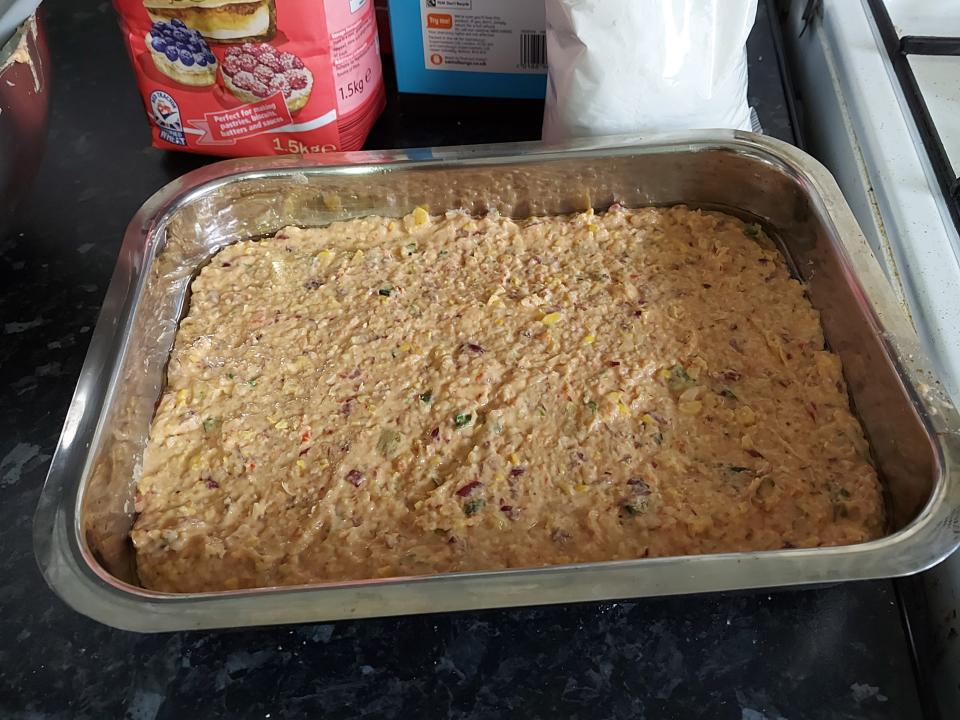I tried a tasty, fiber-filled meatless meatloaf by a nutritionist from Loma Linda, the only US Blue Zone — and went back for seconds
In Loma Linda, where people live longer than average, many people don't eat meat.
I tried a vegetarian alternative to meatloaf made with beans by a Loma Linda nutritionist.
It was tasty, but would have been easier to make if I had the right equipment.
Loma Linda — the only Blue Zone in the US, where people live 10 years longer on average than the rest of the country — is home to many Seventh Day Adventists, who tend to eat a plant-based diet and don't drink alcohol or smoke.
In my quest to find tasty, easy, go-to meals that are good for my health and could boost my longevity, I was intrigued by a recipe for a vegetarian meatloaf by chef Corey Gheen, a registered dietitian nutritionist and assistant professor of nutrition and dietetics at Loma Linda University, who is a Seventh Day Adventist himself.
I, a Brit, have never had meatloaf, but since I am always looking for vegetarian dishes to help me cut down on my meat consumption, this alternative sounded worth trying.
The meatless meatloaf is bean-based, so contains lots of fiber
Instead of the ground beef that you would find in a traditional meatloaf, this one is made mostly of black beans and white beans, as well as a bell pepper, onion, corn, and salsa, so it contains lots of fiber and plenty of nutrients. It also includes an egg, which can be swapped out for a "flax egg" to make the recipe vegan, and the shredded cheese can be skipped, too.

This makes it perfect for a Loma Lindan diet, which is high in fiber. Fiber is important for digestive motility and gut health, and high-fiber diets are a common denominator among Blue Zones. But, as Insider previously reported, most Americans don't eat enough fiber, so this recipe is a great way to pack lots of sources into one dish.
The recipe was a little confusing, and I didn't quite have the right kitchen equipment
I had to make two last minute substitutions for this recipe, buying kidney beans instead of black beans and corn flour instead of masa flour, because I couldn't find them in the grocery store. I don't think this massively affected the end result, although bigger things went wrong later on that may have obscured the impact of these substitutions.
This recipe relies quite heavily on a food processor, but I only had a small handheld blender, so I had to improvise, adapt, and overcome by blending each ingredient in smaller batches and then adding them to a big mixing bowl.
The blending is where things went slightly awry. I hadn't used this particular type of blender before, and, I must confess, I think I blitzed my beans a little too hard. The beans ended up turning into more of a paste than the chunky mixture that chef Gheen achieved in a tutorial video, and I think that contributed majorly to the density of the final product.

The mixture was wet, which meant it took a while to cook
The final mixture was really wet — more slop than the thicker consistency chef Corey achieves in the tutorial video. In a desperate attempt to thicken the mixture into a loaf-y consistency, I added far more corn flour than the recommended cup, and ended up adding plain flour too.
After adding goodness-knows-how-many-cups of various flours, I spooned the orangey gloop into a roasting tin and popped it in the oven. You're supposed to use a loaf tin, but I'm 23 and unfortunately not yet at a stage in my life where it is realistic for me to own one of those, so I again improvised, adapted, and overcame.

It took ages to cook — around one hour and 20 minutes rather than the 45 to 50 minutes that the recipe recommends, which was probably because I had failed to achieve the right consistency before putting it in the oven. When a knife finally came out clean when inserted into the middle, I cut the loaf — which looked more like a single-layer sheet cake — into one-inch wide slices, and served it with some salsa on the side and cheese and coriander sprinkled on top, as recommended.
It tasted just like a bean burger, and would work well as a vegetarian burger patty
It tasted just like a veggie burger, and I quite enjoyed it. It wasn't particularly mind-blowingly flavorful, and the texture wasn't anything like what I imagine the texture of actual meatloaf to be, but I went back for seconds which I think is an indicator of success.

The meatloaf both contained salsa and was served with salsa, which did worry me after last week's Great Salsa Incident, when I tried another Loma Linda-inspired recipe that involved mixing oats with salsa. However, in this recipe, it was only a subtle accompaniment, so the meatloaf helped me get over my salsa aversion as well as hit my recommended daily fiber intake.
If I made this again, I would make the mixture into patties, and eat it as a vegetarian burger instead of a meatloaf. I actually ate the leftovers the next day as thin slices in a pita bread with cheese and coriander, which made for a filling vegetarian lunch.
However, if you do own an appropriately-sized blender and you are at the stage in your life where you own a loaf tin, I would recommend this recipe as an easy, fiber-filled alternative to a classic meatloaf.
Read the original article on Insider
